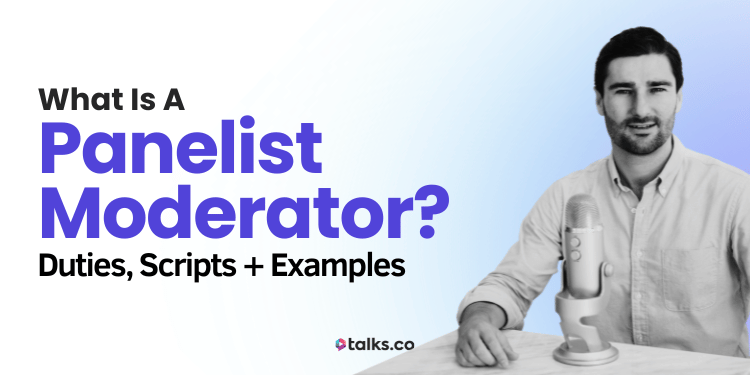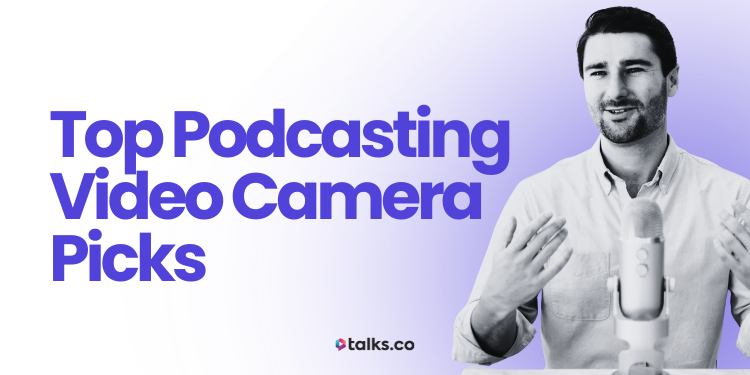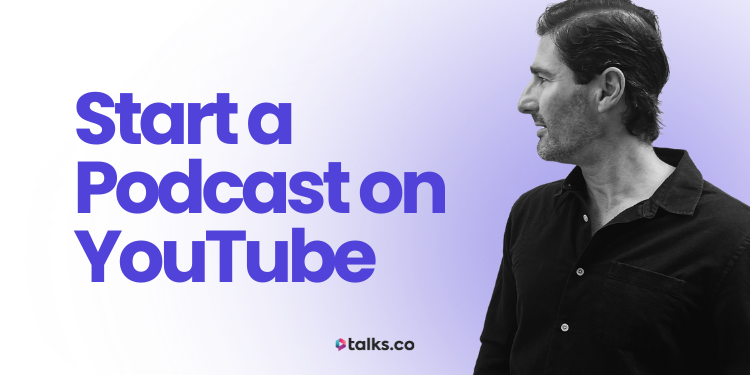So you’ve been asked to moderate a panel. Or maybe you’re curious what a panelist moderator actually does.
Either way, you want answers fast.
What’s the role? How do you prepare? And how do you make sure the discussion runs smoothly without awkward silences or speakers going off track?
This guide will clarify all of that for you.
I’ll show you what a panelist moderator is, the skills that make someone effective, and the steps you can take to confidently lead your own panel whether it’s for a podcast, a virtual event, or a live audience.
What Is a Panel Moderator?
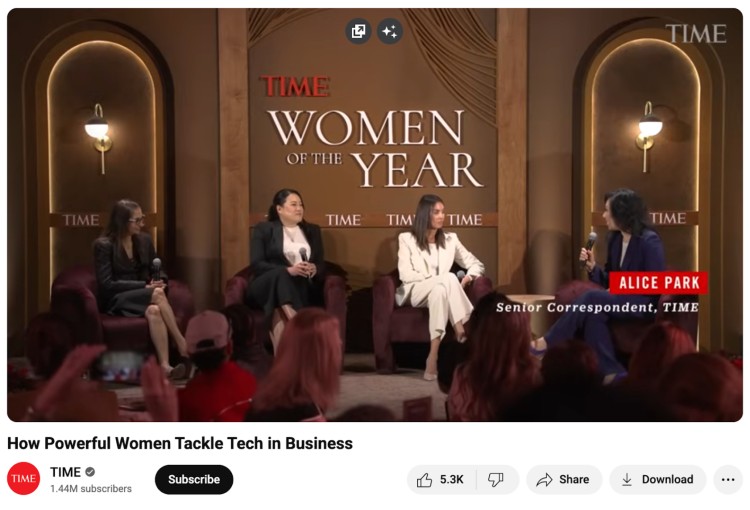
You’ve seen it before.
A panel kicks off, the host introduces the guests, and within five minutes one person is rambling, another keeps trying to jump in, and the audience is checking their phones.
Painful, right? That’s what happens when there’s no moderator doing their job.
A panel moderator is the one keeping the whole thing under control. They:
- Kick things off with energy and set the tone
- Welcome the audience and introduce every panelist properly
- Ask a list of questions that get real answers and make the discussion impactful
- Keep time and agenda tight so no one hogs the mic
- Step in with the next question when someone goes off on a tangent or dodges a conversational topic
- Make sure the audience actually enjoys the discussion
Think of them like the referee in a soccer match. The players (your panelists) bring the skill, flair, and goals. But without the ref, it’s chaos. All fouls, all shouting, and no clear winner.
Panel moderator meaning
In plain English: the panel moderator runs the show without making it about themselves.
They’re:
- The host opening, welcoming, and wrapping things up cleanly.
- The guide steering the chat with good questions so it has structure.
- The referee stepping in when needed, without killing the vibe.
Imagine yourself in the seat: you’ve got four experts on stage.
One loves long stories, another fires off quick one-liners, and a third keeps circling back to their latest project.
Your job? Balance those voices, go through the agenda, and give the audience a show that leaves them thinking, “That was worth my time.”
Moderator vs panelist
This one’s easy to mix up.
- Panelists: They’re the talent. They make statements, bring insights, stories, and hard-earned lessons.
- Moderator: You’re the facilitator. You ask the questions, keep it flowing, and make sure the talent doesn’t step on each other in real-time.
Quick example:
- If you’re a panelist, you’re answering: “What’s one strategy that grew your business past six figures?”
- If you’re the moderator, you’re the one asking that, then turning to another guest: “Sarah, you scaled differently. What worked for you?”
The spotlight should never sit on the moderator. Your job is to make sure the audience walks away saying, “Those panelists were brilliant.”
4 Panel Discussion Moderator Levels

Not all panel moderators operate at the same level. Some are just starting out, while others run high-stakes, high-profile discussions that make panels nail-bitingly exciting.
Knowing the levels helps you understand where you fit and what skills to build next. Here’s a simple breakdown:
- Level 1 (Beginner): You’re just starting to moderate panels, maybe small online or local events. You follow a script, prep your panel questions in advance, and focus on keeping the discussion on track.
- Level 2 (Confident facilitator): You can manage three to four panelists with ease, handle questions from the audience, and pivot when someone goes off-topic. You add personality but still rely on some prep notes and some podcast tools.
- Level 3 (Professional moderator): You run larger panels with multiple experts, keep the energy high, and can handle tech issues or last-minute changes without breaking a sweat. You know how to balance voices and manage any panelists’ challenging personalities.
- Level 4 (Expert/high-profile moderator): You’re trusted for major podcast conferences or events. You guide panels without notes, adapt on the fly, and make the conversation feel effortless with your public speaking skills while delivering maximum value for both attendees and panelists.
5 Panel discussion with moderator benefits
Being a panel moderator isn’t just asking questions. Do it right, and both you and your panelists win. Here’s what’s in it for you:
- Build credibility fast: Running a smooth panel shows you can handle experts, live discussions, and high-pressure situations. People notice that.
- Expand your network: Each panel brings you in front of multiple experts at once. That’s new connections, collaborations, and opportunities.
- Sharpen your communication: You’ll get sharp at asking the right questions, keeping the conversation moving, and reading the room. These skills pay off on podcasts, webinars, and events.
- Boost your visibility: Moderating a fintech panel puts you in front of founders, investors, and journalists in one shot.
- Learn on the fly: Panels are unpredictable. Handling unexpected answers, tech issues, or side conversations fast makes you a sharper, more adaptable moderator.
Step up your game and you’re not just moderating. You’re building authority, expanding reach, and helping your guests make an even better name for themselves.
Panel discussion with moderator example
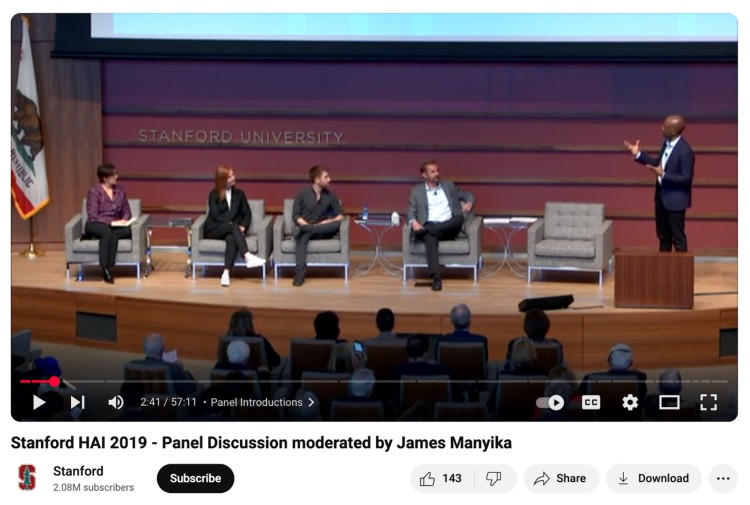
To see these levels in action, here are some real-world panel discussion examples:
- Level 1 (Beginner): The moderator keeps things tight, follows a script to avoid jargon, and makes sure everyone gets a turn. You’ll see this approach in panels like the Stanford HAI 2019 panel discussion.
- Level 2 (Confident facilitator): Balancing multiple voices and pivoting when needed, the moderator guides the flow and keeps it practical. A good example is the How Powerful Women Tackle Tech in Business panel discussion.
- Level 3 (Professional moderator): Handling complex conversations across several experts, the moderator makes sure the discussion maintains brevity and accessibility to help the audience understand what’s going on. Think of panels like Responsible AI: An Interdisciplinary Approach hosted by Xing Xie from Microsoft Research Asia.
- Level 4 (Expert/high-profile moderator): 100K Imaging Project at the Royal Society: S2.6 Panel Discussion is a high-level scientific panel expertly guided, balancing multiple experts and maintaining audience engagement throughout.
What Does a Panel Moderator Do?

A panel moderator keeps the panel discussion moving, the panelists on track, and the audience engaged. Here’s exactly what you do when you step into the role:
- Prep the panelists: Meet with the panelists in advance to probe and understand their expertise and style so you can balance the mix.
- Craft the questions: Write sharp questions that call for real answers. Skip the biography and introduce good topics such as, “What strategy helped you double engagement during a slow quarter?”
- Set the tone: Start with energy and clarity so the audience knows what’s coming. Briefly introduce panelists and outline the discussion to elevate the experience.
- Manage the flow: Stop panelists from dominating or drifting too far. If one starts rambling about a book, pivot fast and ask specific questions like “Great story, now let’s hear how Erin tackled the same challenge.”
- Keep time: Make sure every segment stays on schedule. For an executive coaching panel, balance Q&A so when you ask the audience, three or four questions fit without running over.
- Read the room: Watch audience energy and adjust. If a relationship coaching panel feels flat, switch to a more interactive question.
- Handle logistics: Keep tech, slides, and interactive elements running smoothly. If a mic fails mid-panel, you’re ready with a backup plan.
Panel discussion moderator role and duties

A moderator’s job changes with the panel discussion formats. You’ve got to play it differently depending on the types of shows and setups:
- Q&A panel: Audience drives, you steer. Cut rambling questions short and spread them around. Startup founder vs VC? Line them up back-to-back for contrast.
- Debate panel: Two experts clash over remote vs office? Let them spar, then step in: “Alright, you’ve both made strong cases. Quick show of hands. Who’s with Tom on remote?”
- Case study panel: Finance coach drowning in numbers? Interrupt: “What change actually saved the business?” That’s the takeaway people need.
- Roundtable panel: Four marketers talking over each other? Step in with: “Let’s go one at a time. Jake, quick version of your campaign, then Sarah, how you’d do it differently.” Keeps it moving, keeps it fair.
- Fireside chat panel: Wellness guru detailing a 2-hour morning routine? Jump in: “What’s the one habit anyone here could start tomorrow without a home gym?”
How many panelists are there in a discussion?

The sweet spot is usually 3 to 5 panelists.
- 3 panelists: Best for a tighter discussion. Easier to manage, more time per person. Works well if you want depth over variety.
- 4 panelists: Balanced. Enough perspectives without feeling rushed.
- 5 panelists: Lively, but riskier. You’ll need a moderator who can cut politely and move fast so everyone gets airtime.
Once you go above five, it starts to feel less like a panel and more like a crowd. The audience tunes out, and panelists barely get to speak.
Imagine a tech panel with seven founders all trying to pitch their app. Complete chaos.
The moderator is forced to speed-run questions and the audience walks away with nothing memorable.
That’s why smart event hosts keep it lean.
How to Be a Great Panelist Moderator and Panelist as a Beginner
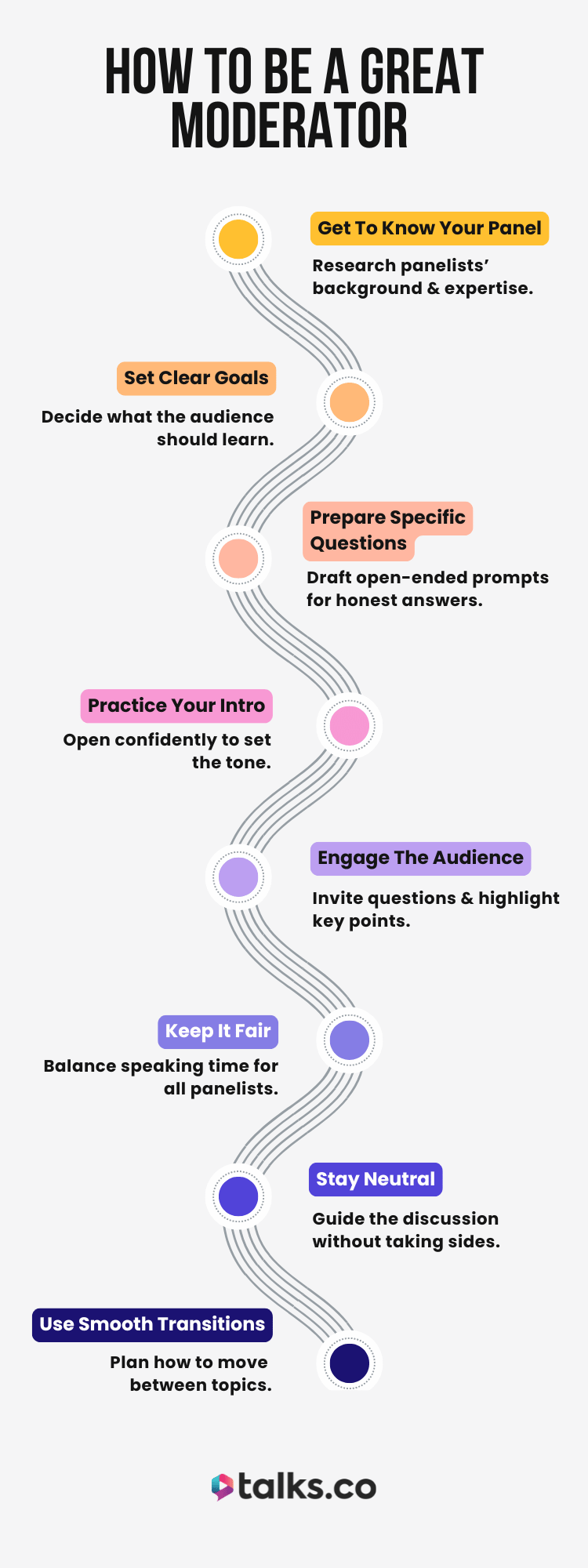
Stepping into a panel can feel intimidating, especially if it’s your first time. When it comes to public speaking, the key is preparation, presence, and knowing your role inside and out.
Here’s how to moderate a panel discussion confidently:
- Get to know your panel: Find your guests, and make sure to research each panelist’s background, expertise, and style. Know their key talking points before you step on stage.
- Set clear goals: As the organizer, decide what the audience should take away from your webinar. Are you focusing on actionable tips, stories, or insights?
- Prepare specific questions: Draft open-ended prompts that encourage your panelist to answer honestly.
- Practice your intro: Your opening sets the tone, so deliver it with confidence.
- Engage the audience: Invite questions, call out strong points, and pivot when needed.
- Keep it fair: Make sure another panelist doesn’t dominate and quieter panelists get space.
- Stay neutral: Be mindful of your body language when panel moderating and don’t take sides. Your job is to guide and provide value to the audience members, not argue.
- Use smooth transitions: Plan how you’ll move from one panelist or topic to the next.
Panel discussion moderator introduction
Here’s a fill-in-the-blank template you can use to introduce a panel and yourself:
“Hello everyone, welcome to [Panel Name]. I’m [Your Name], and I’ll be moderating today’s discussion.
We’ve got an incredible group of experts with us:
- [Panelist 1 Name]
- [Panelist 2 Name]
- [Panelist 3 Name]
Each bringing their unique experience in [Panelist expertise]. Today we’ll be diving into [Panel topic], sharing insights, stories, and practical tips you can take home.
Let’s get started.”
Panel discussion moderator script sample
Fill in the blanks before your panel. Use this as a reference during the discussion. Each section tells you what to say and what to fill in.
Opening
Say: “Welcome, everyone. Today we’re talking about [Panel topic]. I’m [Your name] and I’ll be guiding the conversation.
Our panelists are [Panelist 1 name, expertise], [Panelist 2 name, expertise], and [Panelist 3 name, expertise].
Together we’ll share stories, insights, and practical tips you can use right away.”
Fill in:
- Topic:
- Your name:
- Panelists:
- Key points to introduce:
First question
Say: “[Panelist 1], can you share [specific insight or story related to the topic]?”
Fill in:
- Question/insight:
Follow-up/transition
Say: “Interesting… [Panelist 2], do you agree or see it differently?”
Fill in:
- Question/perspective:
Talks tip: Use contrast. It sparks natural debate instead of polite agreement.
Audience engagement
Say: “We’ve got time for a few audience questions. Please keep them short so we can hear from more people.”
Fill in:
- Prompts/reminders:
- Notes:
Talks tip: If someone rambles, jump in with: ‘Thanks, so the question is [restate it briefly].’ Keeps things sharp.
Mid-panel prompt
Say: “So far we’ve talked about [brief recap]. [Panelist 3], can you share an example from your experience that illustrates this?”
Fill in:
- Summary/example:
Closing question
Say: “Before we finish, let’s go around the panel. What’s one piece of advice you’d give someone tackling [topic] today?”
Fill in:
- Panelist advice:
Wrap-up
Say: “Thanks to our panelists and all of you for joining. If you want to connect, we’ll be around after.”
Fill in:
Notes/extra reminders:
Leave Your Audience Wanting More
Strong panels don’t just happen. They’re led.
A good panelist moderator keeps egos in check, makes sure no one rambles, and pulls out the kind of stories that stick with an audience.
That’s where the value is. Because the sharper the conversation, the bigger the impact for your brand.
If you want your panels or podcasts to become a household name, don’t just pile guests on a Zoom call. Learn how to moderate, or bring in someone who can.
The payoff? More engaged listeners, panelists who look sharp instead of scattered, and episodes people actually share without you pushing for it.
Want a head start?
Create a free Talks Creator profile today. You’ll line up panelists with fresh takes and you’ll have the platform to run discussions that leave people wanting more.
